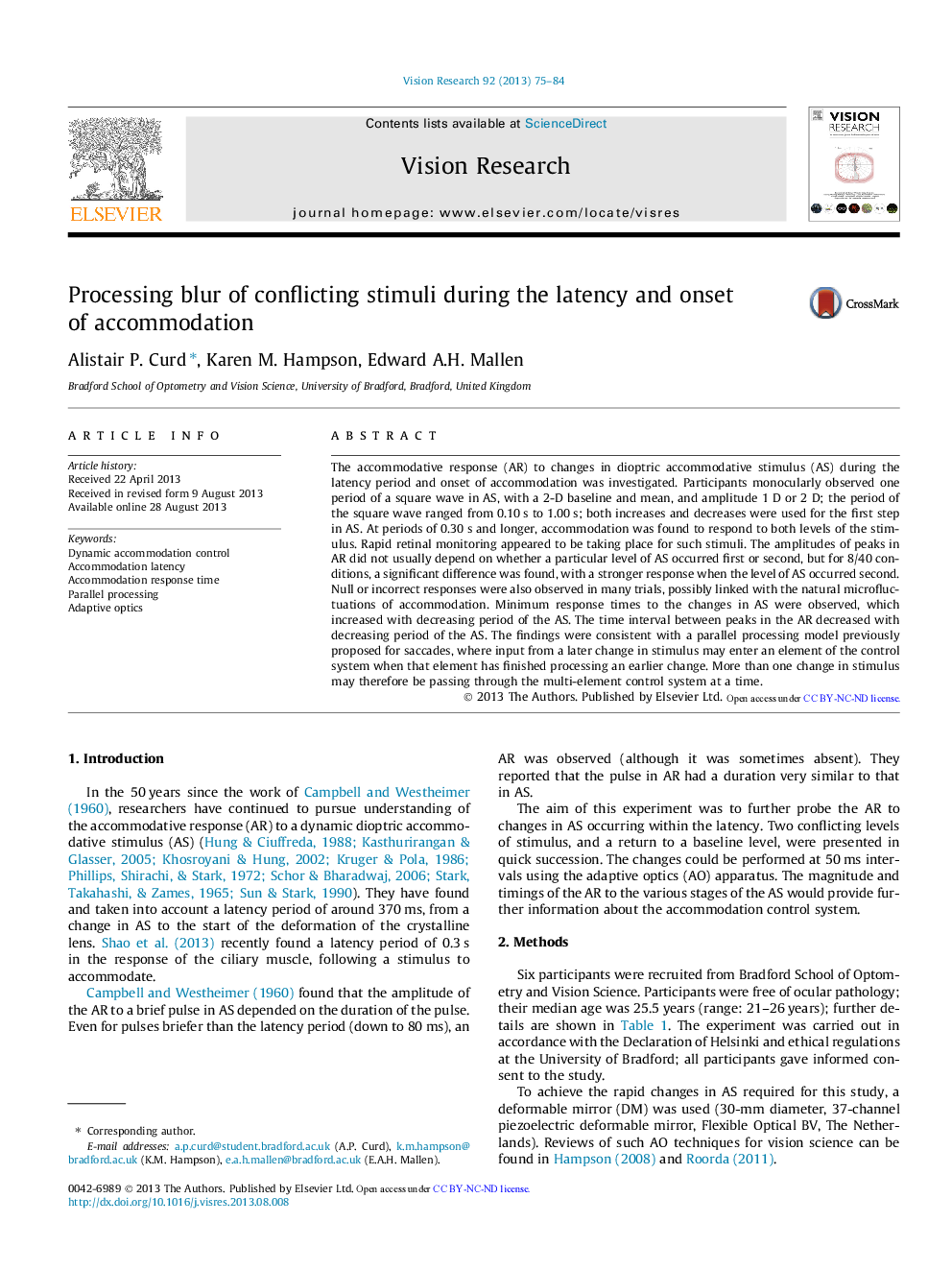| کد مقاله | کد نشریه | سال انتشار | مقاله انگلیسی | نسخه تمام متن |
|---|---|---|---|---|
| 6203570 | 1603202 | 2013 | 10 صفحه PDF | دانلود رایگان |
- Participants observed one period of a square wave in dioptric stimulus.
- An accommodative response to both stages of the stimulus was found, down to a period of 300Â ms.
- Rapid sampling of blur took place during the latency and onset of accommodation.
- Processing of more than one level of stimulus can take place concurrently.
- Timings of the responses agreed with a concurrent processing theory.
The accommodative response (AR) to changes in dioptric accommodative stimulus (AS) during the latency period and onset of accommodation was investigated. Participants monocularly observed one period of a square wave in AS, with a 2-D baseline and mean, and amplitude 1 D or 2 D; the period of the square wave ranged from 0.10Â s to 1.00Â s; both increases and decreases were used for the first step in AS. At periods of 0.30Â s and longer, accommodation was found to respond to both levels of the stimulus. Rapid retinal monitoring appeared to be taking place for such stimuli. The amplitudes of peaks in AR did not usually depend on whether a particular level of AS occurred first or second, but for 8/40 conditions, a significant difference was found, with a stronger response when the level of AS occurred second. Null or incorrect responses were also observed in many trials, possibly linked with the natural microfluctuations of accommodation. Minimum response times to the changes in AS were observed, which increased with decreasing period of the AS. The time interval between peaks in the AR decreased with decreasing period of the AS. The findings were consistent with a parallel processing model previously proposed for saccades, where input from a later change in stimulus may enter an element of the control system when that element has finished processing an earlier change. More than one change in stimulus may therefore be passing through the multi-element control system at a time.
Journal: Vision Research - Volume 92, November 2013, Pages 75-84
